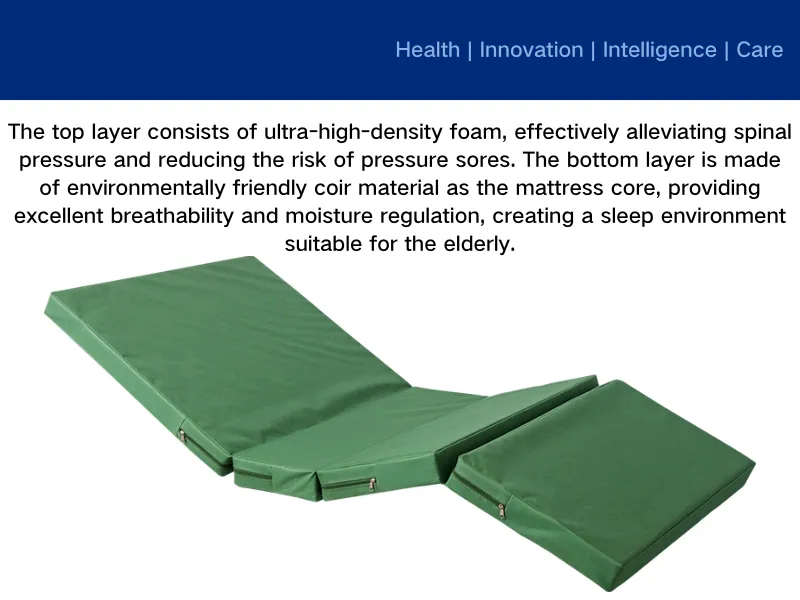Pressure Mitigation Solutions Using Innovative Foam Technology for Enhanced Safety and Comfort
The Importance of Pressure Relieving Foam in Healthcare
In the pursuit of enhanced patient care and comfort, pressure relieving foam has emerged as an essential component in various healthcare settings, particularly within hospitals and long-term care facilities. Pressure ulcers, also known as bedsores, can result in significant health complications and discomfort for patients, making the implementation of preventative measures crucial. This article explores the benefits, applications, and considerations surrounding pressure relieving foam in modern healthcare.
Understanding Pressure Ulcers
Pressure ulcers occur when sustained pressure on the skin restricts blood flow to particular areas, typically affecting vulnerable patients with limited mobility. Factors such as age, skin integrity, moisture, and nutrition can exacerbate the risk of developing these sores. Prevention is critical, as treatment can be time-consuming and costly, often requiring extensive medical care.
The Role of Pressure Relieving Foam
Pressure relieving foam is designed to distribute body weight evenly, reducing localized pressure on sensitive areas. This innovative foam technology absorbs and dissipates energy, helping to ensure that blood flow is maintained beneath the skin. The foam is engineered with varying densities and thicknesses to cater to different needs, making it versatile in application.
One of the primary advantages of pressure relieving foam is its ability to accommodate an individual's body shape. The material conforms to the patient’s contours, further enhancing comfort and support. Additionally, many foam mattresses are made with open-cell structures, allowing for increased airflow that assists in temperature regulation and moisture control—both significant factors in preventing skin breakdown.
Applications in Healthcare Settings
pressure relieving foam

Pressure relieving foam is widely utilized across various healthcare settings. In hospitals, foam mattresses and overlays are commonly used on hospital beds for patients who are bedridden or undergoing surgery. Moreover, specialized seating cushions made from pressure relieving foam are essential for patients who spend extended periods in wheelchairs.
Long-term care facilities also see the integration of pressure relieving foam in beds, recliners, and lounge areas, ensuring residents maintain skin integrity and overall well-being. These solutions not only contribute to patient comfort but also help reduce the incidence of pressure ulcers, thereby lessening the overall burden on healthcare providers.
Considerations for Implementation
While pressure relieving foam is a valuable asset in preventing pressure ulcers, it is not a standalone solution. Comprehensive patient care involves regular assessment and monitoring of skin integrity, incorporating repositioning schedules, and maintaining patient mobility as much as possible. Training healthcare staff on the proper use and benefits of pressure relieving foam is also crucial to maximizing its effectiveness.
Furthermore, healthcare facilities must consider the specific needs of their patient populations. Not all pressure relieving products are suitable for every individual, and selecting the right type of foam can depend on factors such as weight, mobility, and existing skin conditions.
Conclusion
In summary, pressure relieving foam serves as a critical tool in the prevention of pressure ulcers, enhancing patient comfort and care in healthcare settings. Its adaptability and supportive properties make it an essential investment for any facility aiming to improve patient outcomes. However, it should be part of a holistic approach to care, combining technological advancements with proactive nursing practices. By prioritizing pressure ulcer prevention, healthcare providers can significantly improve the quality of life for their patients and reduce the economic burden associated with treatment. The integration of pressure relieving foam is a step forward in creating a safer, more comfortable healthcare environment.
-
Mattresses Designed for Back Pain ReliefNewsAug.08,2025
-
Innovative Wave Mattresses for Ultimate ComfortNewsAug.08,2025
-
High-Quality Mattresses for Hospital BedsNewsAug.08,2025
-
High-Quality Mattresses for Every NeedNewsAug.08,2025
-
Healthcare Foam Mattress: Sleep Better, Heal FasterNewsAug.08,2025
-
Cube Mattress for Daily ComfortNewsAug.08,2025
-
How Hospital Mattress Choices Directly Impact Patient Comfort and CareNewsAug.05,2025

